

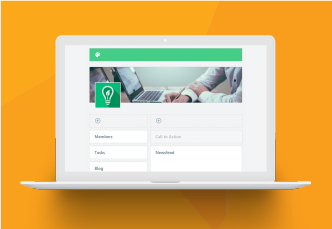
There are fundamental differences between collaboration across a small team and collaboration across an enterprise. They have different use cases, they require different features -- and yet they are often treated as one and the same. Build out SharePoint -- or any other collaboration platform -- by focusing only on the enterprise-level requirements, and small teams will find it difficult to be effective. Instead, what increasingly happens is those small teams turn to consumer-based tools and technologies to get their work done, outside of the purview of IT. Likewise, build out your environment by focusing on small team collaboration without considering how these use cases roll up into the broader organizational knowledge management and collaboration initiatives, and you will likely sacrifice your enterprise-level requirements. Clearly, there is a gap between the needs of small teams and enterprise collaboration platforms. The most efficient and effective way to bridge this gap is through social communities.

The terms "social" and "collaboration" are increasingly viewed as synonymous, and organizations that are able to successfully infuse enterprise collaboration systems with social capabilities are seeing dramatic improvements to adoption and engagement metrics. Why this dramatic improvement? People are inherently social: we share our content, we ask questions, we look for opportunities to impart our knowledge and expertise. When document and process-centric systems are paired with social capabilities, we begin to tap into these natural human activities. The end result is that people become more engaged, more connected, and more willing to add content and context to the projects in which they are involved.
The value of social collaboration is simple: the more people are involved in collaborative activities, the greater the business value received. Likewise, if people are not participating -- there is no business value.
Small teams are effective because everyone knows their role and responsibilities, which makes it easy to share information and have conversations. A single manager knows the capabilities of each member of his or her team, and when a new task appears, can quickly assign that task to the right person. Most collaboration tools are designed for the small team model -- where everyone is directly connected, and real-time communication is essential. This "line of sight" collaboration tends to be less formal, allowing people to share quickly and easily, with minimal requirements for documentation, metadata (other than what is automated), and process.
End users love this model, because it gives people the freedom to share what they want, when they want, with whomever they want. But it tends to ignore some corporate governance concerns -- and long-term knowledge management concerns. The small team use cases is modeled after the belief that the more barriers you put up, the less likely people are to collaborate.
Where small teams are focused on real-time conversation and tactical activities, such as reviewing and co-editing documents, use cases at the enterprise have more to do with broad corporate communications, complex business process management activities, or in capturing and storing collective knowledge with various retentions and governance requirements. Enterprises want to catalog, protect, and make discoverable their collective information assets.
What bridges this gap between small team and enterprise requirements is the social community. Social has the ability to tap into the natural flow of discussion that happens over the life of a project. When a social community is paired with SharePoint team sites, knowledge and expertise that might otherwise be lost is captured within SharePoint.
When social collaboration happens outside of SharePoint, additional silos of information are created. Ideally, this capability belongs within a single platform -- not loosely integrated through "feeds" or requiring end users to jump between multiple tabs, but natively and fluidly within the SharePoint experience, whether on-premises, online, or hybrid.
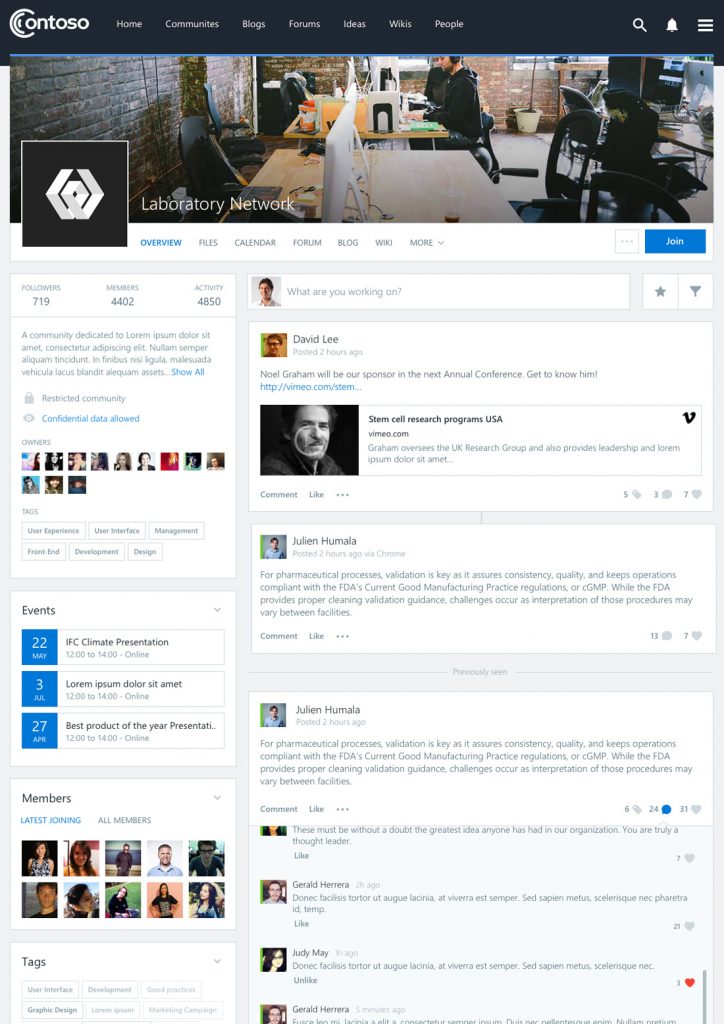
When paired with SharePoint team sites, the social community bridges the gap between small teams and the enterprise, giving the small team the tools they need to collaborate quickly and easily, while large organizations can leverage the conversation and content generated within these communities to better surface their content, add context and relevant metadata -- all while enforcing corporate standards around governance, security, and compliance.
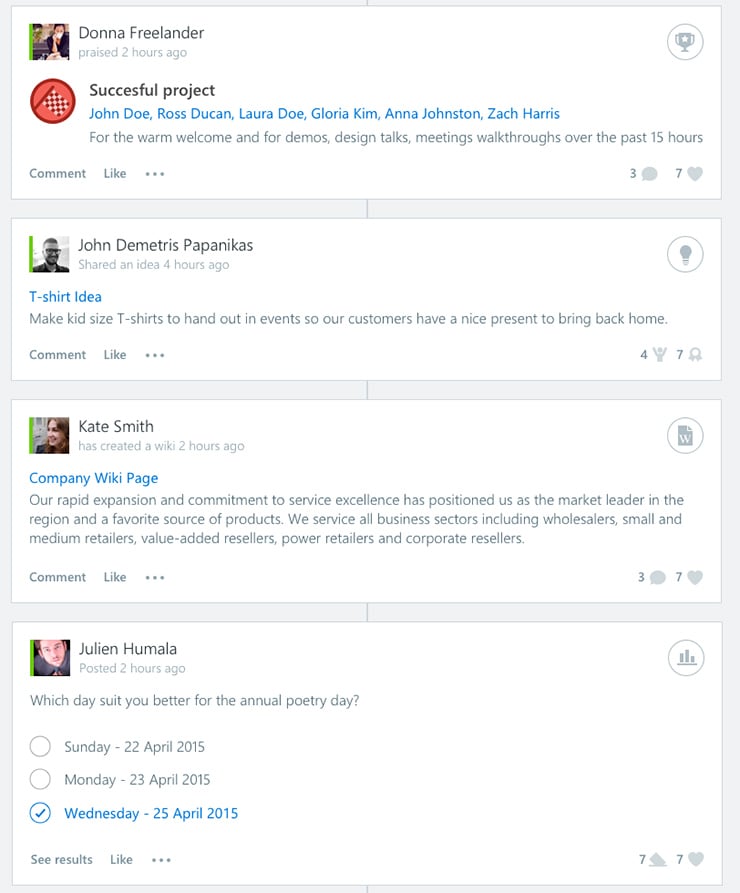
Beezy provides this powerful capability within SharePoint, giving small teams the cutting-edge features they want -- and administrators the controls they need. Because it is SharePoint, everything is security-trimmed, ensuring that people only see what they have the permissions to see, and allowing administrators to continue using the tools and scripts they are familiar with for SharePoint, reducing the management overhead of maintaining separate collaboration tools and systems.
Once deployed, creating new communities within Beezy is quick and easy. Organizations that want to regulate who and where team sites and communities are created can continue to do so, and the provisioning process can be streamlined so that every new community adheres to defined standards. As part of the community creation process, administrators can determine the privacy of a new community, and whether the conversations or content created within are hidden or discoverable through search.
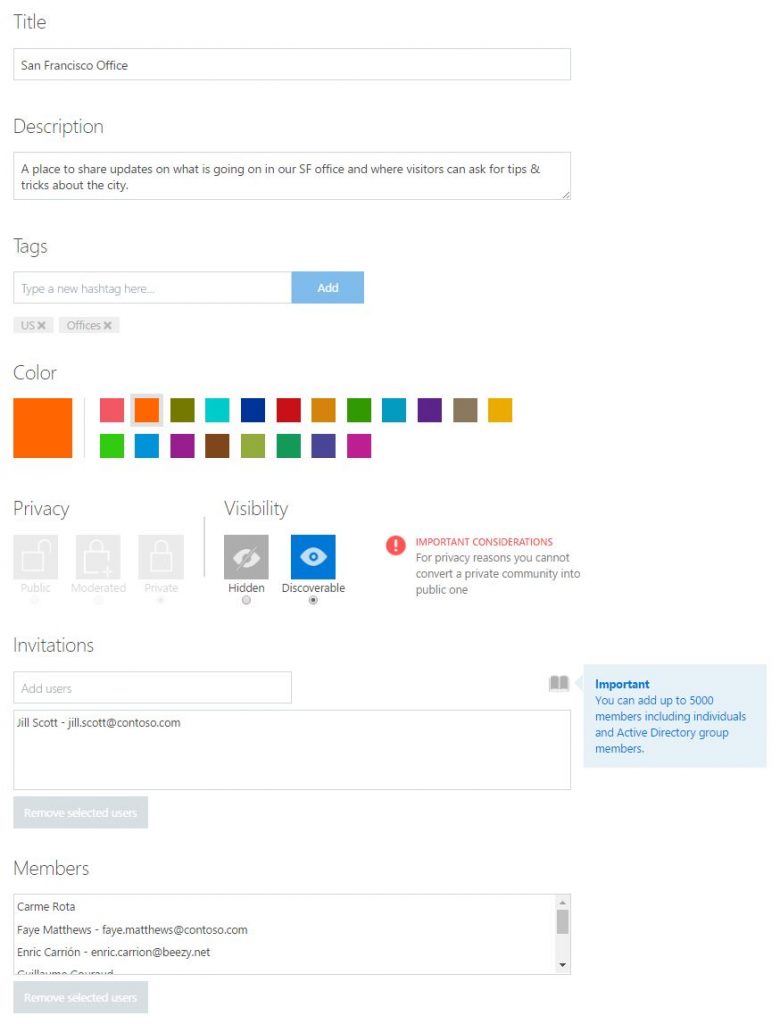
Additionally, administrators have control over the advanced setting that are enabled within a community, allowing them to change the branding, determine which SharePoint assets to surface, and to turn unique Beezy features on and off. What makes all of this so powerful is that it is all SharePoint under the hood. Upload a document to the community, discuss it, share it with individuals and teams, rate it, Like it, bookmark it -- and all of that rich, contextual social data is captured within SharePoint content databases, and tied to that original document stored in the SharePoint document library.
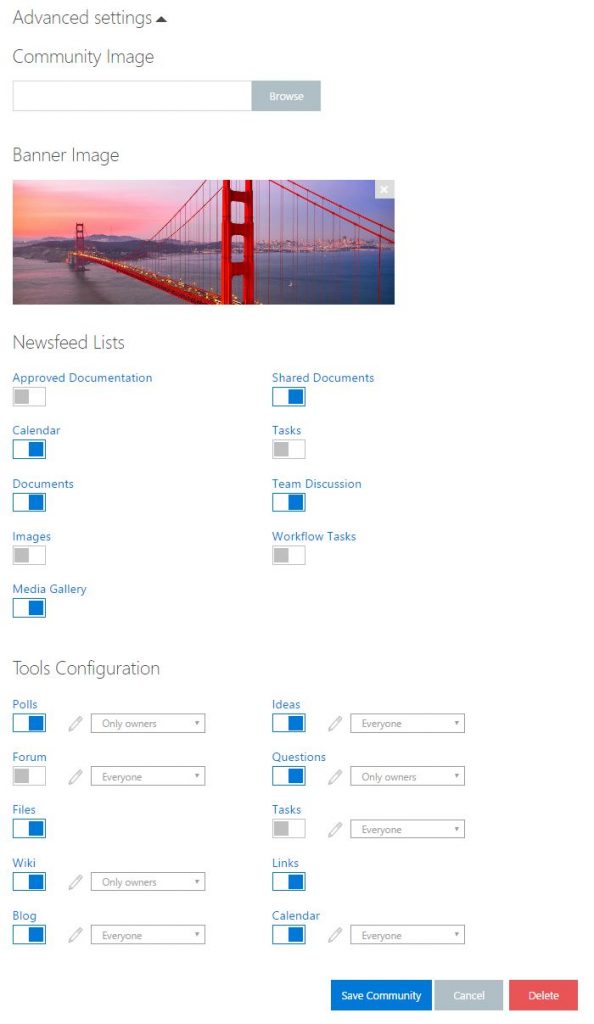
At Beezy, we often talk about our ability to "connect the dots" between all of the various Microsoft capabilities, and you can see much of this through our use of social communities. Communities are at the center of everything we do with Beezy, because we know that teams are most effective when document collaboration is paired with rich social activities.
To learn more about Beezy, and to see a live demonstration of our award-winning SharePoint solution, please complete our demo request form, and someone will get back to you to schedule a time.
These Stories on Beezy

No Comments Yet
Let us know what you think